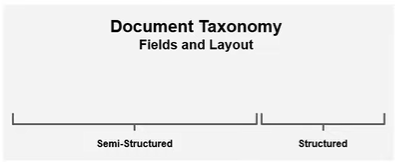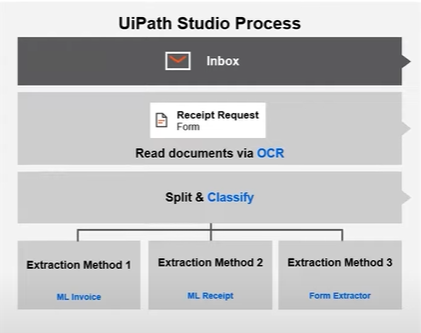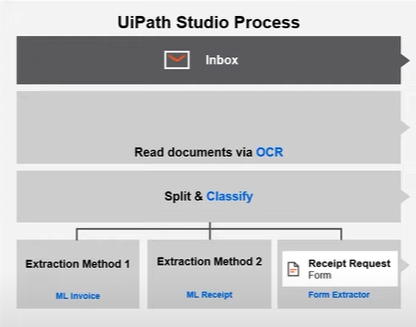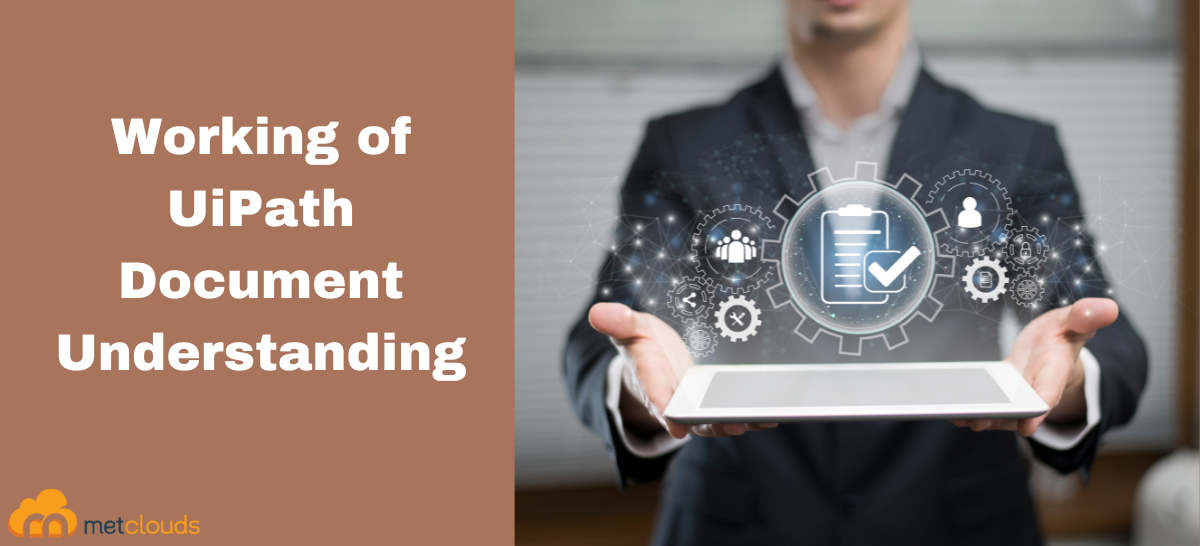UiPath Document Understanding is an AI-powered solution provided by UiPath, a leading Robotic Process Automation (RPA) software company. UiPath Document Understanding automates the extraction and processing of data from structured or semi-structured documents, such as invoices, purchase orders, receipts, insurance forms, and more. Structured documents will not change; they are highly predictable in layout and the data they want to extract from that particular document. Semi-structured documents are variable in terms of layout, so common data to extract in data fields are variable. It combines optical character recognition (OCR) technology with machine learning algorithms to extract relevant data fields from documents and convert them into structured data that can be easily used and processed by RPA robots or other software systems. In this article, we will go through the working of UiPath Document Understanding.

How UiPath Document Understanding Works
To know the working of UiPath Document Understanding, we will take email inbox as an example. In the case of email inboxes, there is some variability like a document in an attachment or part of the email body is the URL of the document from an exterior location which you have to click and download.
Step 1. The first document processing of this studio process, it first starts with the OCR. For that, you have to send a Receipt Request Form which is extracted from the email. OCR will read it.
In UiPath, OCR extracts text and metadata associated with the text. A text includes coordinates of text page breaks and other unique descriptors of the text.
Step 2. Split and classify the document.
Split functionality means if a file comes in with a receipt request, a PO, and an invoice, you can split that single file into three different files. Thus it allows handling variations.
Step 3. Split and Classify look at the document in a simple way and figure out whether it is a Receipt Request, PO, or invoice, then it is classified and forwarded to the optimum Extraction Method.

So depending on the document type structured and semi-structured you have to provide different kinds of extraction methods.
Step 4. In this example, our form didn’t need to split it turns out is a form and goes to Extraction Method 3 which is Form Extractor

Form Extractor is a simple template-based approach to extracting data from documents.
Step 5. Once the data is extracted from the fields, then it is sent for other logic processes depending on whether it is maths or characters. Logic processing is at the stage of Post-Processing and Business Rules.
Step 6. After checking everything in Post-Processing and Business Rules, the system definition says the data is good and can do Automated Data Entry.
Let’s consider a semi-structured document Invoice which is difficult, to process as it is variable.
The invoice at Classify stage is sent to the machine learning extractor, ML Skill. Then the invoice is sent to ML Skill for data extraction, and this extraction happens external to the UiPath studio process.
From there, we will call AI Center. AI center is life cycle management for Machine Learning models. If we want to know more about what is happening in ML, we have the Document Understanding ML model here. The ML package has a Schema with fields to extract and Training Data to teach the model to read semi-structured documents.
After receiving data from ML Skill, we will apply Post-Procssing+Business Rules. And if it fails, we have to trigger humans in this loop. We will make this sit in a cube and notify a named individual to extract data and reconsider differences. Once the Invoice is validated, we automatically send data to the system of records. In this case, we capture the changes in a bucket called validated data, and those lessons learned are applied to the Training Data in the ML Package that gives you a continuous training loop.
Conclusion
We have gone through the working of UiPath Document Understanding. UiPath Document Understanding is an AI-powered solution offered by UiPath that enables data extraction and processing automation from structured or semi-structured documents. By leveraging UiPath Document Understanding, organizations can automate document-centric processes like invoice processing, purchase order management, or document classification. This solution helps improve accuracy, reduce manual effort, and accelerate data-driven decision-making.
We help your organization to automate document processing with the help of UiPath Document Understanding.


